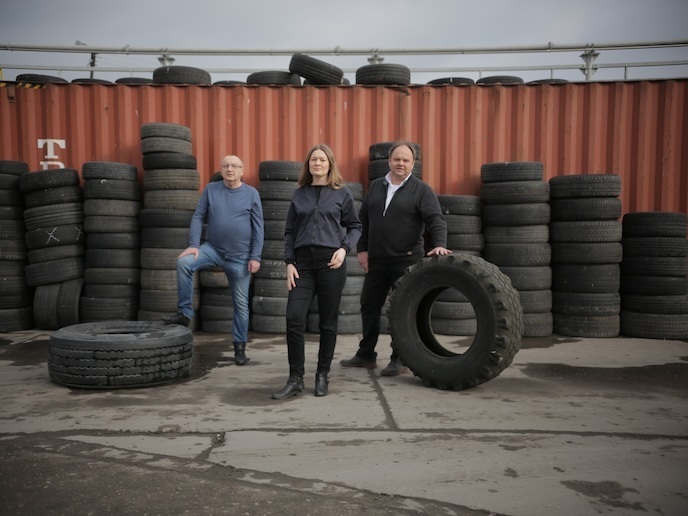From waste to worth – novel extraction of carbon black from used tyres
If you are not involved in certain manufacturing sectors you may not have heard of carbon black. More familiarly known as soot, its use is ubiquitous. In tyre manufacturing it enhances durability and resistance to wear and tear. It’s also used in plastics, inks and coatings for its colouring properties. The importance of carbon black lies in its versatility and fundamental role in these applications. As things stand, the primary method of producing carbon black involves the burning of crude oil, which involves the consumption of natural resources and results in CO2 emissions and other harmful greenhouse gases. The CBreCYCLE project has developed a novel technique that bypasses the need for ‘virgin’ carbon black. “Our process recovers carbon black from recycled tyres, offering a cost-effective alternative for the production of this vital resource. We won’t eradicate the need for carbon black – but we can make the way we extract it far more environmentally friendly!” asserts project coordinator Martyna Sztaba, based at Syntoil(opens in new window), Poland, which hosted the project. Globally, around 1 billion tyres are discarded annually, but only about half are recycled. The rest contribute to CO2 emissions or environmental hazards in landfills. This situation highlights the inefficiency in tyre recycling and the urgent need for sustainable practices. But the technology developed by the project, with the help of EU funding, doesn’t only reduce the environmental impact of production. “Another advantage of our product is its high quality, making it suitable for applications such as in the production of paints and pigments. This is a new avenue for recycled carbon black which, previously, has not been of a high enough standard to be used in those processes. Ours can be, opening up new possibilities for the application of recovered carbon black, which were previously limited by the lower quality of recycled product,” says Sztaba.
Novel system of pyrolysis and carbonisate refinement
For every tonne of traditional virgin carbon black produced, about 1.5-2.5 tonnes of CO2 are emitted, Sztaba explains. This is a significant factor, considering that the global demand for carbon black is around 15 million tonnes annually. “In comparison, our recovered carbon black produces less than 0.5 tons of CO2 per tonne, marking a substantial improvement in terms of emissions,” she adds. This is achieved for example through an innovative system of pyrolysis developed by Syntoil through the project, and a novel approach to purification. Pyrolysis is a method of decomposing organic material at high temperatures in the absence of oxygen. In the context of tyre recycling, it involves heating used tyres to break them down into various components, one of which is contaminated carbonisate (contaminated soot) which is then purified and changed into recovered carbon black. What sets Syntoil’s process apart is the use of continuous pyrolysis, where heating is entirely electric, unlike traditional pyrolysis that often relies on gas burning. This makes the process very precise. But the real innovation, and what gives the project’s product the competitive edge, involves the purification of the pyrolysis solid residue, known as contaminated char or carbonisate. This contaminated carbonisate undergoes a sophisticated thermochemical process in Syntoil’s facility, where it is purified to the level of virgin carbon black made from crude oil. “It’s this ability to refine the carbonisate, to high purity standards, that truly distinguishes our product in the market.”
Part of a wider shift to valuing waste streams
The CBreCYCLE project feels their work is going beyond recycling. Sztaba believes the team are redefining the lifecycle of materials. “Our hope is that this technology becomes a cornerstone in a more circular economy, where waste reduction, resource efficiency and environmental sustainability are not just ideals but practical realities.” Syntoil aims to expand their reach by refining and scaling up the process to cater to a broader market. They hope this will not only increase the adoption of recovered carbon black, but also set a precedent for other sustainable industrial practices. “We’re proud to be part of a global shift where used materials are treated as valuable products, not waste,” Sztaba says.







